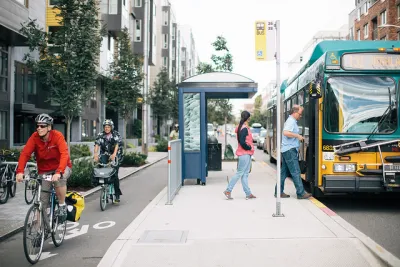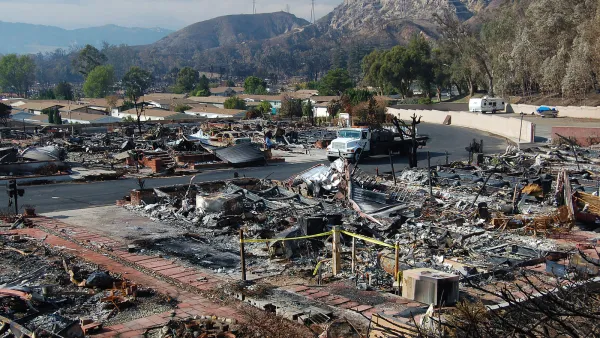As climate change brings prolonged, intense heat waves to cities once associated with rain and cold weather will have to attend to the lack of shelter provided to bus and transit riders.

Michelle Baruchman reports on the state of bus shelters in the city of Seattle, which has weathered a summer beset by record high temperatures—a sign of more heat waves to come as the planet's climate changes.
Baruchman cites data quantifying the city's bus shelters ("Of the approximately 7,500 Metro bus stops across King County, 1,700 have bus shelters…") before interviewing a question-and-answer session with researcher Kevin Lanza, who in 2019 published an article, along with Casey P. Durand, that explored the importance of bus shelters and trees for moderating heat.
In the interview, Lanza states that high temperatures are reducing transit ridership. In Lanza's words:
Trees have been shown to modestly reduce the effect of extreme heat on ridership or reduce the losses of ridership from extreme heat. Bus stop shelters don’t have that same association but both bus stop shelters and trees are proven heat management strategies that can in some specific instances be used exclusively or together to assist with climate adaptation of transportation networks.
While Los Angeles frequently makes news for transit shelter shenanigans, Seattle too passed up a chance to enter a public-private partnership to improve its shelters in 2018. The underfunding and mismanagement of bus and transit shelters is a nationwide problem, as detailed in an article from February 2020.
FULL STORY: How cities can help protect transit riders from extreme heat

National Parks Layoffs Will Cause Communities to Lose Billions
Thousands of essential park workers were laid off this week, just before the busy spring break season.

Retro-silient?: America’s First “Eco-burb,” The Woodlands Turns 50
A master-planned community north of Houston offers lessons on green infrastructure and resilient design, but falls short of its founder’s lofty affordability and walkability goals.

Delivering for America Plan Will Downgrade Mail Service in at Least 49.5 Percent of Zip Codes
Republican and Democrat lawmakers criticize the plan for its disproportionate negative impact on rural communities.

Test News Post 1
This is a summary

Test News Headline 46
Test for the image on the front page.

Balancing Bombs and Butterflies: How the National Guard Protects a Rare Species
The National Guard at Fort Indiantown Gap uses GIS technology and land management strategies to balance military training with conservation efforts, ensuring the survival of the rare eastern regal fritillary butterfly.
Urban Design for Planners 1: Software Tools
This six-course series explores essential urban design concepts using open source software and equips planners with the tools they need to participate fully in the urban design process.
Planning for Universal Design
Learn the tools for implementing Universal Design in planning regulations.
EMC Planning Group, Inc.
Planetizen
Planetizen
Mpact (formerly Rail~Volution)
Great Falls Development Authority, Inc.
HUDs Office of Policy Development and Research
NYU Wagner Graduate School of Public Service





























